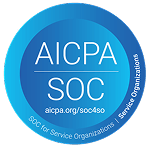Exploring your international student loan options
International students have access to a range of student loan types, each with different eligibility rules, interest rates and support structures. Here’s a detailed look at what’s available:
1. Private student loans for international students
Offered by traditional banks and financial institutions, these loans are typically available to international students with a U.S.-based cosigner. A cosigner’s credit history and income reduce the lender’s risk, which can mean lower interest rates or more favorable terms. However, not all students have family or close connections in the U.S. who can act as a cosigner.
2. No-cosigner international student loans
Some lenders have recognized that many international students don’t have a cosigner. Instead, they assess your future potential: your university, program and expected career outcomes. These loans remove a major barrier to funding.
3. Personal education loans
Personal education loans are more general-purpose loans offered by some banks and credit unions. They’re not always tailored to international students, but can sometimes be used to cover educational costs, but at a higher cost. Eligibility often depends on your visa status and whether you have a credit history in the U.S.
4. International student loan refinancing
While not a first source of funding, refinancing can be an option after graduation if you’ve secured a job and built some credit history. Refinancing replaces your existing loans with a new loan that has better terms. However, it’s usually limited to students who remain in the U.S. to work on optional practical training (OPT) or other work visas.
Each option has pros and cons. Comparing them carefully can help you find the best fit for your situation – whether that means prioritizing no-cosigner eligibility, the lowest possible interest rate or flexible repayment timelines.


